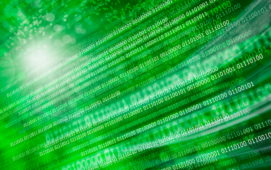
The interfirm linkage for the Equities Phase 2a of the Consolidated Audit Trail (CAT) went live in the US today (October 26), with firms now required to validate transaction linkages between them to ensure orders are routed correctly. One of the most important milestones of the entire CAT journey, the interfirm linkage requirements are nevertheless complex and firms are still struggling in certain areas.
According to data provided to Regtech Insight by Gresham Technologies, there are currently 1,178 firms reporting with a total count of more than 15 billion order events. On the plus side, just 0.67% are late submissions, which shows the industry has done well with the initial go-live, ingesting, mapping and submitting large volumes of data from disparate sources (despite the pandemic).
When interfirm linkage was first implemented in Production on August 10th initially the error rate was as high as 40%, dropping to 20% by the end of August. Another month on and as of October 2 it was down to 11% (with Routed Order ID mismatches accounting for 56% of these) so industry has clearly demonstrated some improvement. But is it enough?
“11% is high considering the volumes we are dealing with,” warns Philip Flood, Chief Commercial Officer at Inforalgo (a Gresham Technologies company). “As we are a Certified CAT Reporting Agent our error rate is below 0.5% and we are still working with clients to optimize the 20,000 linkage errors we are receiving. Some of these still need to manually be resolved by talking with counterparties to understand the failed match.”
So where should firms be focusing their efforts?
“The regulator is encouraging all firms to communicate with counter parties on linkage keys, and they want clients to look on the CAT reporting portal and monitor data ingestion, linkage errors, and work out ways to correct them,” notes Flood. “But just because of the volume of errors, it’s very difficult to try and do this manually. Firms really need to be applying some sort of automation to find patterns and improve operational efficiency.
Having applications that can automatically ingest the errors, and insert reporting rules that improve reporting quality, really does help provide data insight.”
The error rate is particularly significant for CAT reporting because FINRA has suggested that firms who sustain a submission rate of less than 5% (less than 2% for post -submission corrections) will not have to report to OATS in parallel, which would cut their workload in half and lead to obvious cost savings.
But there are other phases coming up that firms also need to be prepared for. The Interfirm linkage for Options Phase 2b goes live on January 4, 2021, for example. Currently 760 firming reporting with a total count of more than 1.4 billion. Of these, 0.27% are late submissions and 2% have interfirm linkage errors.
“Whilst there is still over two months to go until go-live, there is the holiday period and uncertainty with the pandemic so it’s important to resolve linkage errors before code freezes in December,” urged Flood. “The regulatory timelines of CAT are very important, especially for people who are creating their own in-house applications. A phased-in approach is highly recommended.”
Subscribe to our newsletter




